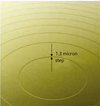Surgical treatment of presbyopia II
Article information
Abstract
This review gives an overview of the current multifocal intraocular lenses (IOLs) landscape, in terms of the technology, benefits, and limitations of different premium IOLs, as well as significant clinical outcomes. Cataract is the most common cause of visual impairment in older adults. From 1980, the number of blind and visually impaired people have decreased due to cataract surgery. As the number of surgical procedures increases every year, patient demands have also changed with many patients expecting excellent visual acuity without glasses. Multifocal IOLs can provide spectacle-independence for near, intermediate, and distant vision tasks. Multifocal IOLs can be classified into bifocal, trifocal, and extended depth of focus multifocal IOLs. The ultimate goal of multifocal lenses includes reduced incidence of photic phenomena, and improved uncorrected near, intermediate, and far visual acuities for those working with computers and smartphones, as well as no contrast sensitivity loss. Although some patients have issues with halos and glare, overall patient satisfaction and quality of life are generally high after multifocal IOL implantation. Careful patient selection should be made to satisfy different individual needs.
Acknowledgement
This research was supported by Basic Science Research Program through the National Research Foundation of Korea (NRF) fund-ed by the Ministry of Education (2018R1D1A1A02085334 & 2016R1A6A1A03010528).
Notes
No potential conflict of interest relevant to this article was reported.







